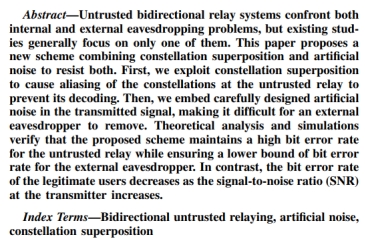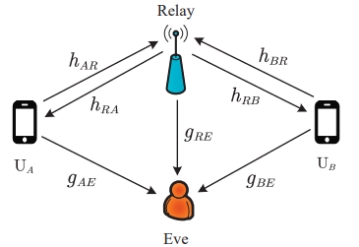Zhao Jiawei, an Undergraduate Student of Grade 2022 Majoring in Communication Engineering, has Published a High-Quality Academic Paper in an Internationally Renowned IEEE Journal
Recently, Zhao Jiawei, an undergraduate student of Grade 2022 at the School of Mechanical Engineering and Electronic Information, published an academic paper titled "Constellation Superposition and Artificial Noise Against Interior and Exterior Eavesdropping in Bidirectional Untrusted Relaying Systems" as the first author in IEEE Wireless Communications Letters, an internationally renowned IEEE journal. The paper proposes a constellation superposition technique based on artificial noise, which provides an innovative solution against interior and exterior eavesdropping in bidirectional untrusted relaying systems. The supervisor of the paper is He Hongliang, an distinguished associate professor of the Department of Communication.
IEEE Wireless Communications Letters (WCL) is an internationally renowned journal in the field of wireless communications, with an impact factor of 4.6. The journal focuses on the research and innovation in the physical and link layers of wireless communication, covering corresponding new technologies, conceptual analysis methods and new applications. It belongs to the T2 level in the classification catalog of China University of Geosciences (Wuhan).
In recent years, the School has actively encouraged undergraduate students to participate in innovation, entrepreneurship and research projects to improve their practical and technological innovation abilities, aiming to further stimulate their enthusiasm for innovation and entrepreneurship, and to cultivate the innovative spirit and ability of college students in the new era.
(URL: https://ieeexplore.ieee.org/document/10729881)



Fig. 1. System model
